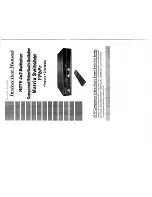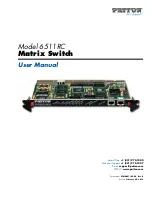
Command
History
Version
Description
9.7(0.0)
Introduced on the Z9500.
Usage
Information
For each priority, you can specify the shared buffer threshold limit, the ingress
buffer size, buffer limit for pausing the acceptance of packets, and the buffer offset
limit for resuming the acceptance of received packets. When PFC detects
congestion on a queue for a specified priority, it sends a pause frame for the
802.1p priority traffic to the transmitting device.
You can use the
priority
command to set up both the administrative and peer-
related PFC priorities. For example, you can configure the intended buffer
configuration for all eight priorities. If you configure the number of lossless queues
as 4 and if the administrator-configured priorities configured within the DCB input
policy is applied, then the configuration for those priorities are pre-designed.
However, if the peer-provided priorities are applied, although a DCB input policy is
present, the peer-provided priorities become effective for buffer configuration.
This method of configuration provides an easy and flexible technique to
accommodate both administratively-configured and peer-configured priorities.
Example
Dell(conf-dcb-buffer-thr)#priority 0 buffer-size 52 pause-
threshold 16 resume-offset 10 shared-threshold-weight 7
show linecard port-set backplane all
Displays the PFC buffer threshold assigned to a QoS policy.
Syntax
show linecard
<0-2/all>
port-set
<0-3/all>
backplane all [
pfc
buffer-threshold
|
details
|
statistics
] |
[ ets details]
Parameters
detail
Enter the keyword detail for a full list of results.
Command
Modes
EXEC
Command
History
This guide is platform-specific. For command information about other platforms,
refer to the relevant
Dell Networking OS Command Line Reference Guide
.
The following is a list of the Dell Networking OS version history for this command.
Version
Description
9.7(0.0)
Introduced on the Z9500.
Data Center Bridging (DCB)
633
















































